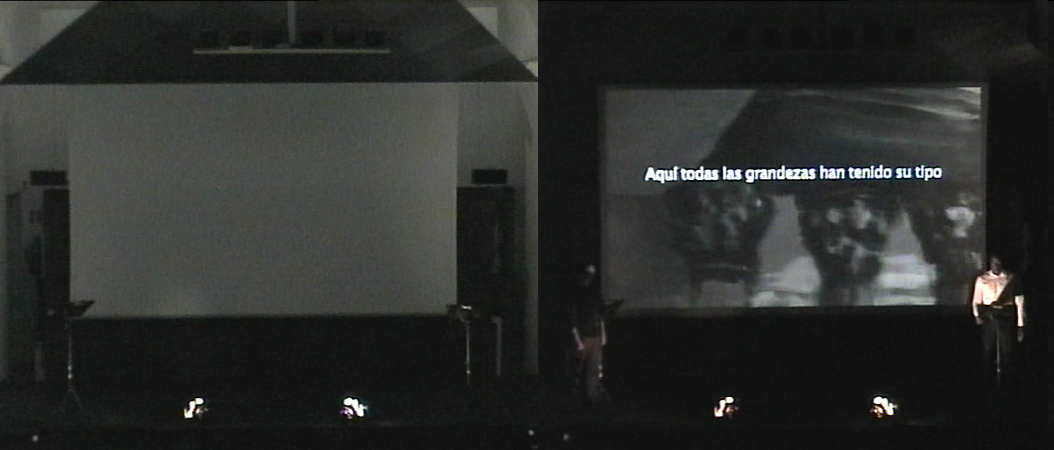This reprocessing of the performance The Oath of Monte Sacro, a pocket-epic
took the form of a pedagogical essay.
The narrative assumes the perspective of the poet Simon Rodriguez.
Rather than considering him an alleged witness and narrator of Bolivar's oath (juramento);
I consider Simon Rodriguez narrator-creator of the historical alegory
known as Juramento en el Monte Sacro.
The story of the Juramento en el Monte Sacro
tends to be presented as a prophetic event of the independence of Venezuela and,
by extension, of the whole Hispanic America.
Some historians consider it 'the year zero of the Bolivarian calendar',
as if a caudillo history had started there and then,
in the beginning of the XIXth century (hence the bicentennial).
In the context of an encounter for 'entering and leaving' the official commemorations of the Bicentennial
in Latin America and the Caribbean,
it became all the more important to highlight the mythic-millenary temporality of the juramento.
The creator-narrator does not restrict the story to his days.
Instead, he brilliantly sets the narrative in a classical landscape charged with history.
This maneuver gives a mighty Greco-Roman foundation to the narrative
and at the same time creates an opening (a horizon of liberation) in ancient history,
towards the new world.
For S.R,
independence could only make sense if it meant a recovery of humanity's universal project: the Respublica.
The performance at Reina Sofia
followed the same structure of the initial processing of this material:
a critical voice, a narrative voice and a lyrical voice alternating to recompose the story.
Whereas the visual set up of the performance took on a more digital, video-like quality (some said, cinematic).
The sombre and concentrated mood of the sang parts were emphasised by
slow-motion travelling shots of the actual painting used in the first performance.
Spanish subtitles (for the sang parts) followed
a particular typography deviced by Simon Rodriguez as 'geometric theorems'.
And projected still images complemented the narrative, thus adding another layer of references to the performance.
And a fourth voice (in video), an Italian voice from antiquity told us a fable related to the political history of the Sacred Hill, in Rome.

